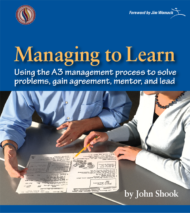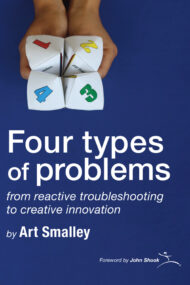A3 Report
An A3 Report is a Toyota-pioneered practice of getting the problem, the analysis, the corrective actions, and the action plan down on a single sheet of large (A3) paper, often with the use of graphics. At Toyota, A3 reports have evolved into a standard method for summarizing problem-solving exercises, status reports, and planning exercises like value-stream mapping.
But it is much more than a sheet a paper with facts and figures. It is a management process learned through dialogue about concrete problems. It does this by means of a dialogue between a lean manager and a subordinate who learns lean management and leadership as she solves an important problem.
This process of solving problems while creating better employees—A3 analysis—is core to the Toyota management system. An A3 report guides the dialogue and analysis. It identifies the current situation, the nature of the issue, the range of possible counter- measures, the best countermeasure, the means (who will do what when) to put it into practice, and the evidence that the issue has actually been addressed.
The lean leader’s job is to develop people. If the worker hasn’t learned, the teacher hasn’t taught.
Training Within Industry Report (Washington, DC: War Manpower Commission, Bureau of Training, 1945).
Effective use of the A3 process can facilitate the shift from a debate about who owns what (an authority-focused debate) to a dialogue around what is the right thing to do (a responsibility-focused conversation). This shift has a radical impact on the way decisions are made. Individuals earn the authority to take action through the manner in which they frame the issue. They form consensus and get decisions made by focusing relentlessly on indisputable facts that they and their peers derive from the gemba.
As a result, A3 management can best be understood as neither “top-down” nor “bottom-up.” The process clarifies responsibility by placing ownership squarely on the shoulders of the author-owner of the A3, the individual whose initials appear in the upper right-hand corner of the paper. This person may not have direct authority over every aspect of the proposal. Yet this owner is clearly identified as the person who has taken or accepted responsibility to get decisions made and implemented.
Example A3s
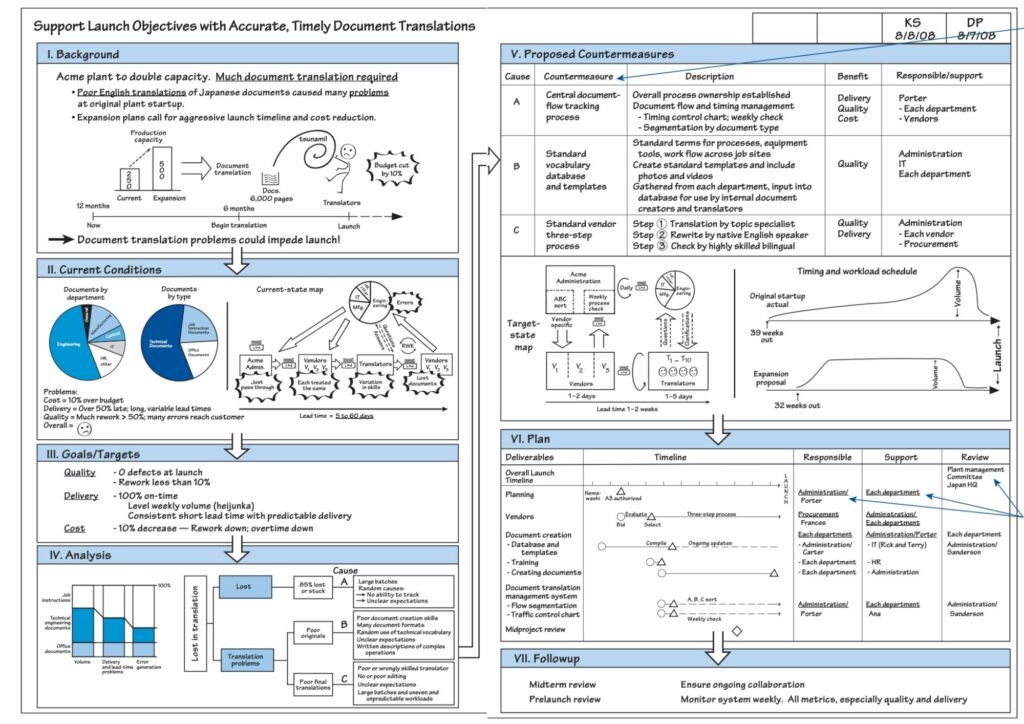
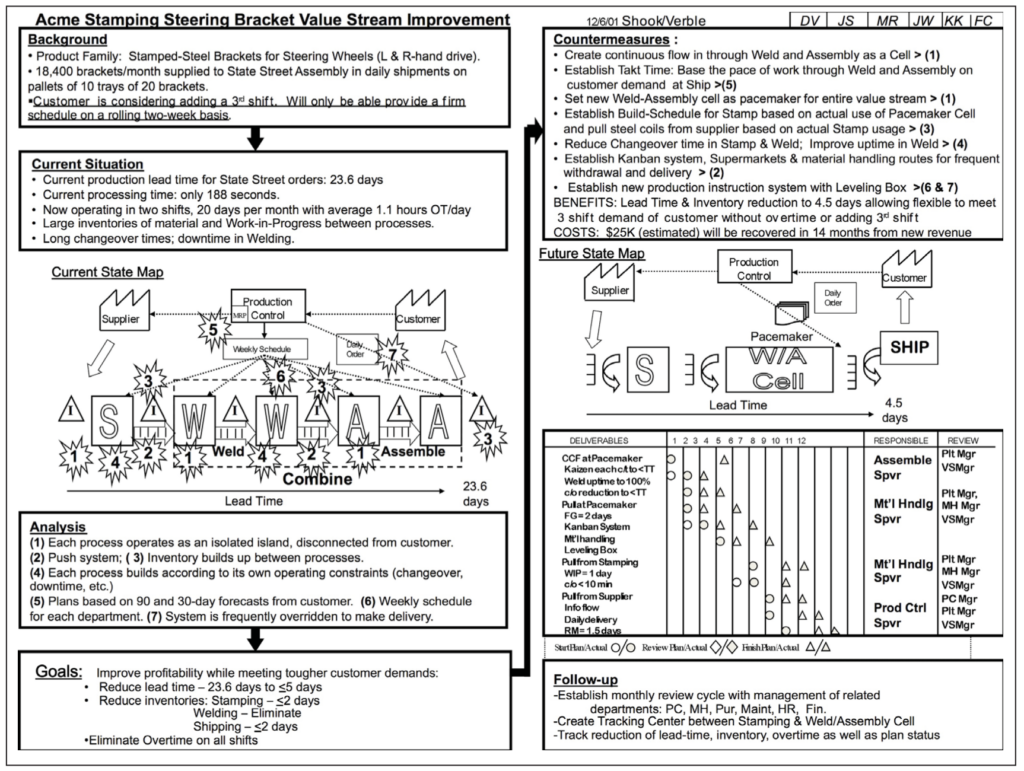
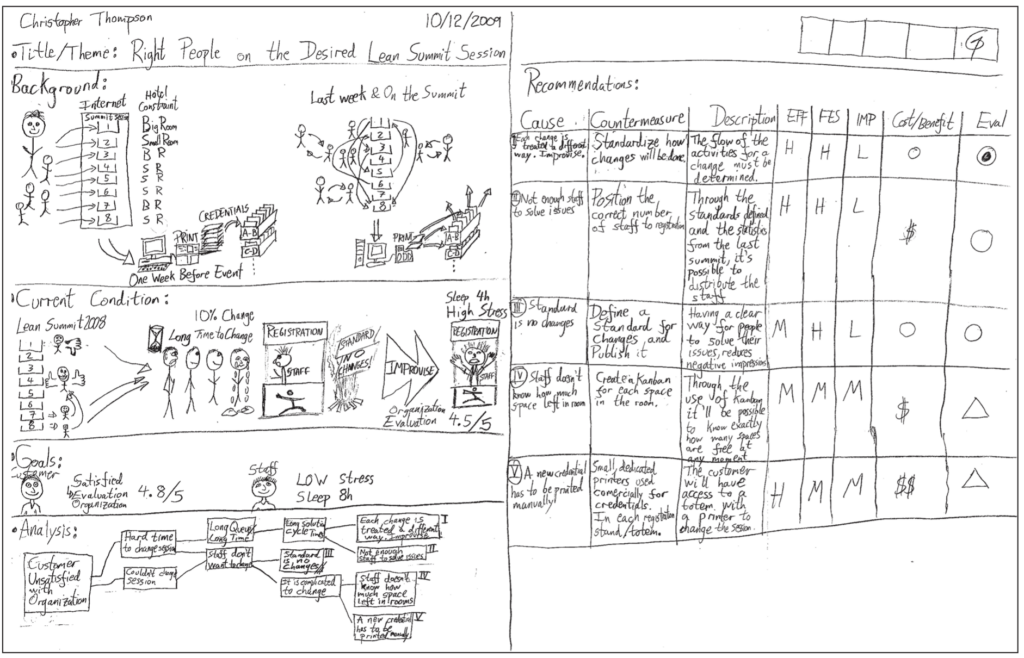
The Many Facets of A3
- A standard paper size: At its most fundamental, “A3” is the international term for a sheet of paper 297 millimeters wide and 420 millimeters long. The closest U.S. paper size is the 11-by-17-inch tabloid sheet.
- A template: Many companies and individuals use an A3-sized document pre-printed with the steps needed to conduct lean problem-solving or improvement efforts, with generous white space for “A3 owners” to record their progress. While they refer to this document as a template, an “A3” is not a template.
- A storyboard: As users record their problem-solving or improvement project’s progress, the A3 becomes a storyboard used to facilitate communication, collaboration, and coordination with other stakeholders affected by the goal the A3 owner is working toward (e.g., solving a problem or improving a process). By having all the facts about the effort in one place, logically presented and summarized, the A3 owner is better able to gain buy-in from other stakeholders for recommended process changes.
- A report: Once the A3 problem-solving effort concludes, the A3 storyboard serves as a report of the problem-solving or improvement initiative, including the facts and data gathered, hypotheses considered, countermeasures tried, experiment results, corrective actions taken, and the overall thinking of the A3 owner and stakeholders. At Toyota and elsewhere, A3 reports have evolved into a standard method for summarizing problem-solving exercises, status reports, and planning exercises like value-stream mapping.
- A problem-solving methodology (or process): Most lean practitioners know “the A3” as a problem-solving process guided by specific steps or questions. The left side of the A3 focuses on various elements of the problem or current condition, and the right on the countermeasures considered, tested, and chosen that resolves the issue or creates a higher standard.
- A management discipline (or process): At a higher level, lean leaders, managers, and supervisors use “the A3” as a means by which they oversee and guide subordinates while simultaneously helping them develop their lean thinking and practice — particularly lean leadership and problem-solving — capabilities. With A3 management, leaders challenge their direct reports to solve a problem. Then, with the A3 report guiding the dialogue and analysis, leaders coach them through the problem-solving process. Importantly, leaders coach by asking questions versus providing answers, ensuring responsibility remains with the subordinate to solve the problem by pursuing facts and building consensus. Through this interaction, subordinates address the issue, allowing them to make progress toward the objective and, in so doing, learn the lean approach to leadership and management and gain problem-solving capability.
- A3 thinking (or analysis): Most A3 coaches and advanced lean practitioners refer to “the A3” as a thinking process. In this case, the term refers to a systematic approach to resolving problems or improving work processes. Someone can follow this systematic approach, regardless of whether they are guided by or record their findings on an A3 document.
- An alignment tool: Advanced lean organizations that have incorporated lean thinking and practices throughout their operations use “A3s” as part of their strategy deployment and execution efforts. In this case, the A3 process ensures a standard approach to managing and coaching people, all directed toward solving problems that help achieve corporate objectives.
Templates
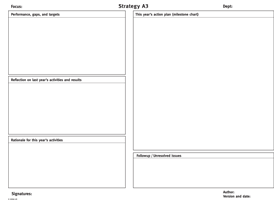
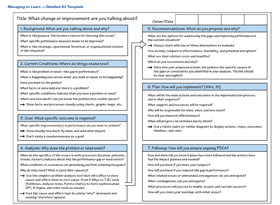
Additional Resources

Article
How Do I Start My A3?
When asked “where do I start to write my A3,” David Verble responds “don’t start by writing.” His piece, the first in a series about getting started, offers lessons he has learned about the nature of thinking, and a productive way to start the A3 by recognzing it as a thinking process.
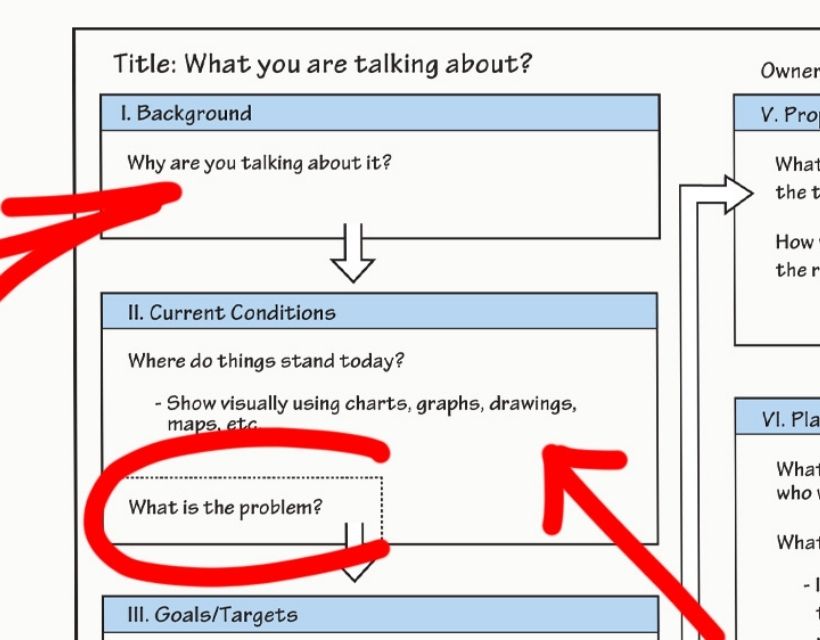
Article
Don’t Present Your A3: Share Your A3
When asked “where do I start to write my A3,” David Verble responds “don’t start by writing.” His piece, the first in a series about getting started, offers lessons he has learned about the nature of thinking, and a productive way to start by recognizing it as a thinking process.
Related Books
Related Online Courses
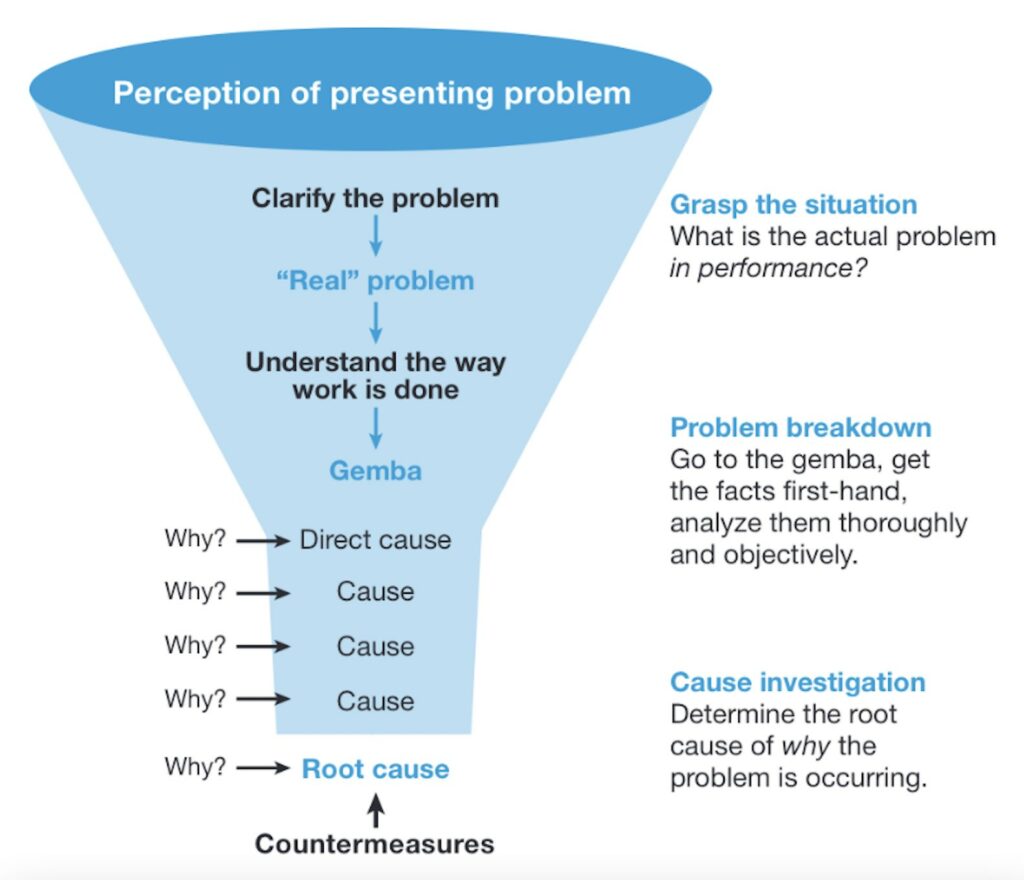
Intro to Problem Solving
Problem-solving is critical to every position in every industry. In this course, you will learn to grasp the situation at the gemba (where the work is done) and use all of your senses to understand what is truly happening.

